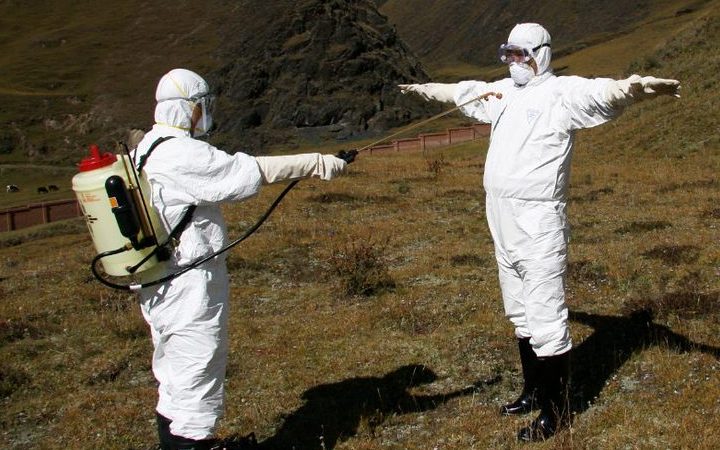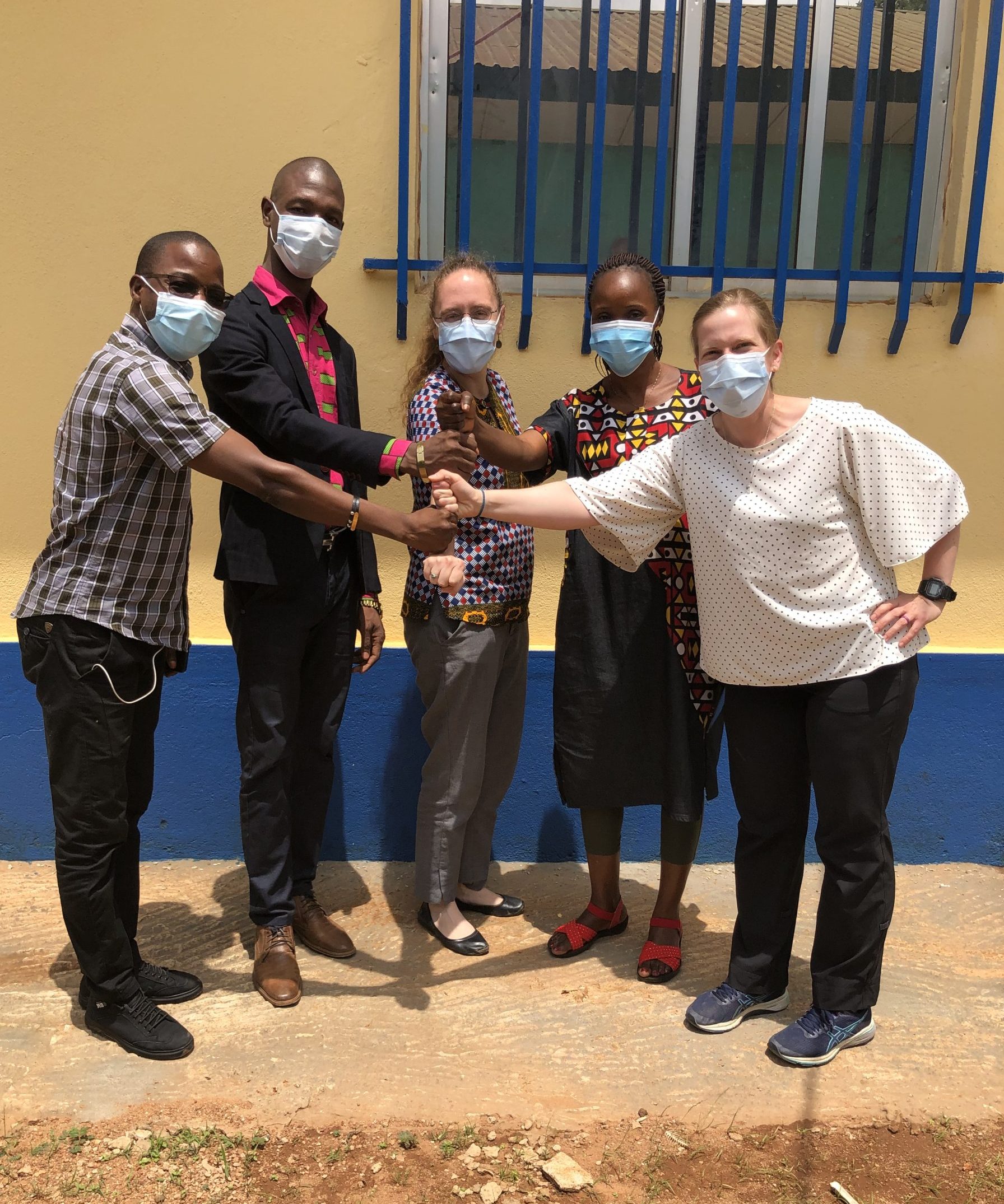Event-based Surveillance

Disease detectives investigate a plague outbreak in the Himalayas in 2017, utilizing personal protective equipment. Photo: CDC
The Global Disease Detection (GDD) Operations Center serves as CDC’s program dedicated to detecting and monitoring global public health events of international importance using a process called Event Based Surveillance (EBS). This allows us to detect and support outbreak investigations at their earliest stages, often before the cause is determined. EBS looks at reports, stories, rumors, and other information about health events that could pose a serious public health risk to individuals and communities globally. The information identified may include those from media sources, either informal or formal, and are accessed via the internet. Such information may be described as unstructured information because the information obtained is non-standardized or subjective.
The goal of EBS is to detect unusual public health events, illnesses, or deaths, that might signal an outbreak as early as possible. Information obtained through EBS can come from sources like reports in the media or rumors on an internet blog. An event is a manifestation of disease or an occurrence that creates a potential for disease, which can include infectious, zoonotic, food safety, chemical, radiological, or nuclear in origin and may be transmitted by persons, vectors, animals, goods, or through the environment. EBS expands that definition to include an “event” of unknown origin and refers to a “signal” that has been verified.
EBS can also be community-based, meaning that information about a possible public health event is reported by people in the community through a hotline or other messaging system. For example, if a teacher notices an unusually high number of children absent from school with similar symptoms and reports it to a local health official, the teacher can be considered a participant in community EBS. Health facilities also contribute to EBS by rapidly reporting unusual or unexpected events.
The following five categories are fundamental aspects of EBS that allow for rapid action as it relates to emerging disease threats. Early detection of disease and rapid emergency response depends on synergy between access to accurate information and Global Disease Detection (GDD) Operations Center partner collaborations.
GDD Operations Center has demonstrated EBS success in four EBS categories:
- Rumor Investigation and Verification: The GDD Operations Center becomes aware of unconfirmed outbreaks or other events through partners, from CDC SMEs, other EBS channels and acts quickly to verify the information on the ground to disprove false rumors.

Ebola data managers in Guinea in 2021 left to right: Dr. Bakary Oulare (WHO), Dr. Sekou Camara (FETP), Amber Dismer (CDC), Dr. Martine Lamah Yoyo (FETP), and Noemi Hall (CDC). Photo: Dante Bugli/CDC
- Ebola, Guinea – 2014: On March 13, 2014, the CDC epidemiologist assigned to the Food and Agriculture Organization of the United Nations (FAO) contacted the GDD Operations Center in response to an informal report from a World Food Programme (WFP) of a hemorrhagic fever of unknown origin in the Forest Region of the Republic of Guinea among local MoH and WFP staff. Within 24 hours, CDC was able to respond with recommendations for Ebola rapid diagnosis, guidance on safe and dignified burials, and medical precautions.
- Smallpox, Yemen – 2022: Rumors of a smallpox outbreak in Yemen circulated on the internet on February 8, 2022, following a claim posted by a radio talk show. Within a day, the GDD Operations Center alerted WHO which launched an investigation. On February 11, 2022, the GDD Operations Center and partners received official confirmation from WHO that there were no smallpox cases in Yemen. The official information was then shared with CDC agency colleagues as well as the U.S. Biosurveillance Indications and Warning Analytic Community (BIWAC), a self-organized community comprised of select federal, academic, and national laboratory investigators for collaborative exchange of information among members regarding indications and warning of biological events that could threaten U.S. national interests.
- Early Alert and Response: The GDD Operations Center often becomes aware of events through EBS before national authorities are advised of the outbreak allowing CDC and partners to quickly respond to an outbreak. CDC has been involved in the first notification of many major outbreaks such as: Middle East Respiratory Syndrome, polio, cholera, Mpox, dengue, Ebola, and COVID-19.
- Avian Influenza A (H5N1), India – 2021: On July 21, 2021, media reported human infection with Avian Influenza A (H5N1) virus in Delhi, India. The signal was detected by the GDD Operations Center and circulated to subject matter experts in Influenza who could provide technical assistance, and the CDC country office who promptly informed the national health authorities. Samples were collected and sent to the National Institute of Virology in Pune, who confirmed the sample was H5N1 positive.
- COVID-19 Pandemic – 2020 – Ongoing: On December 31, 2019, media reported cases of pneumonia-like illness in Wuhan, China. The signal was detected by the GDD Operations Center and circulated to appropriate subject-matter experts in NCIRD who could provide technical knowledge to the unprecedented situation and the CDC country office in China.
- Epidemic Intelligence: National governments are sometime reluctant to report disease outbreaks for economic or political reasons, so the GDD Operations Center may not always be able to gather immediate information directly from the affected country or our partners. In these situations, the GDD Operations Center relies on EBS systems alone to gather any available open-source material to understand the status of an outbreak.
- Dengue, Egypt – 2017: On September 14, 2017, CDC EBS systems detected media reports of a cluster of febrile disease in a resort area in the Red Sea governorate, or state of Egypt. Shortly thereafter, media reported that the outbreak was attributable to dengue. This dengue outbreak was not publicly announced until October 2.
- Information Sharing: The GDD Operations Center along with CDC SMEs and external partners utilize epidemic intelligence platforms to share information that may not be released in the public domain but are critical for informing outbreak response.
- Ebola, DRC – 2018: On May 7, 2018, the Government of the DRC announced an Ebola outbreak in the Equateur province of DRC. Multiple international governments and organizations used a shared data portal to provide updated information on response activities for a more coordinated approach among G7 countries. The speed and effectiveness of the collaborative response contributed to bringing about a successful end to the epidemic just over two months later, on July 24, 2018.